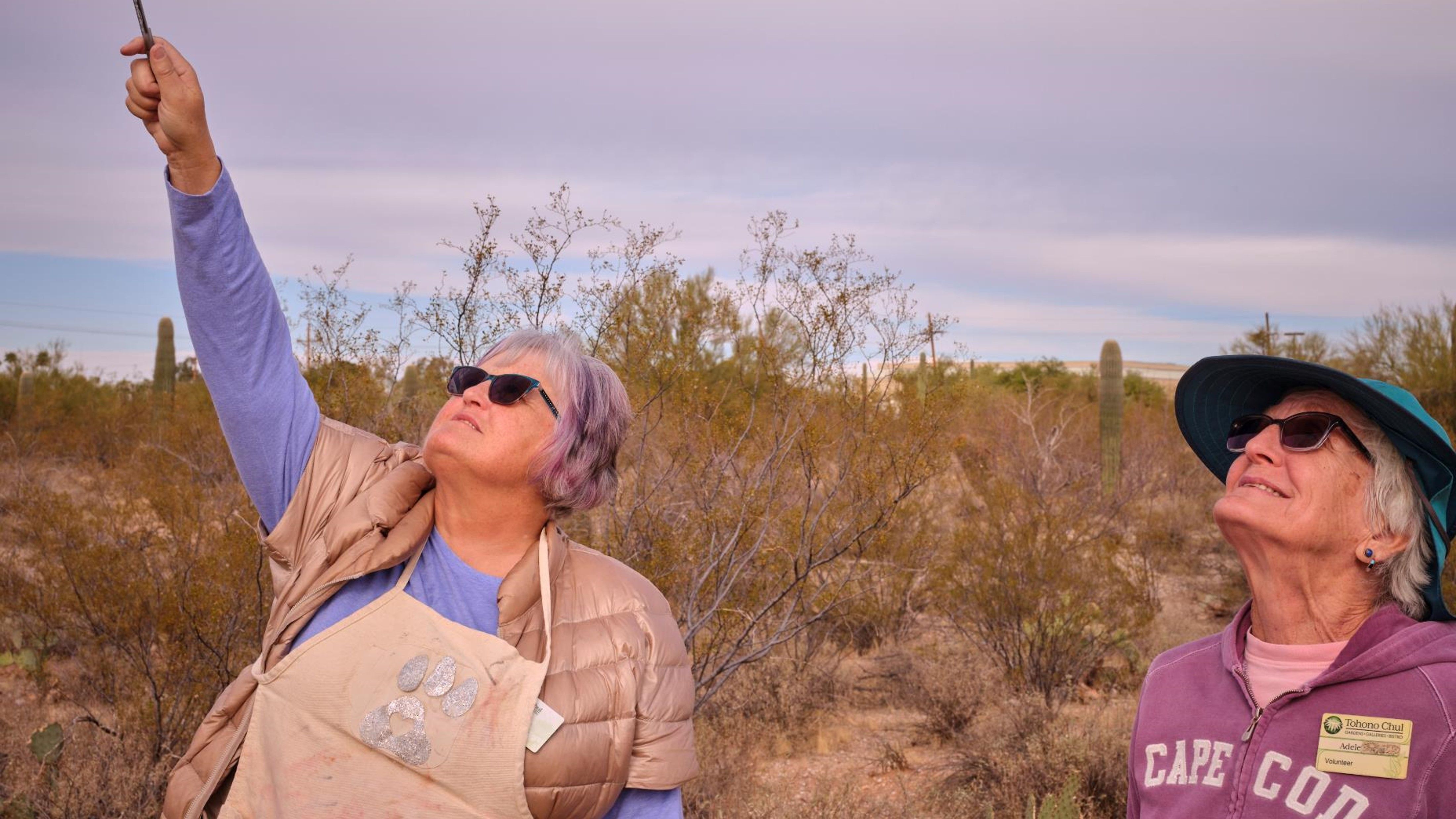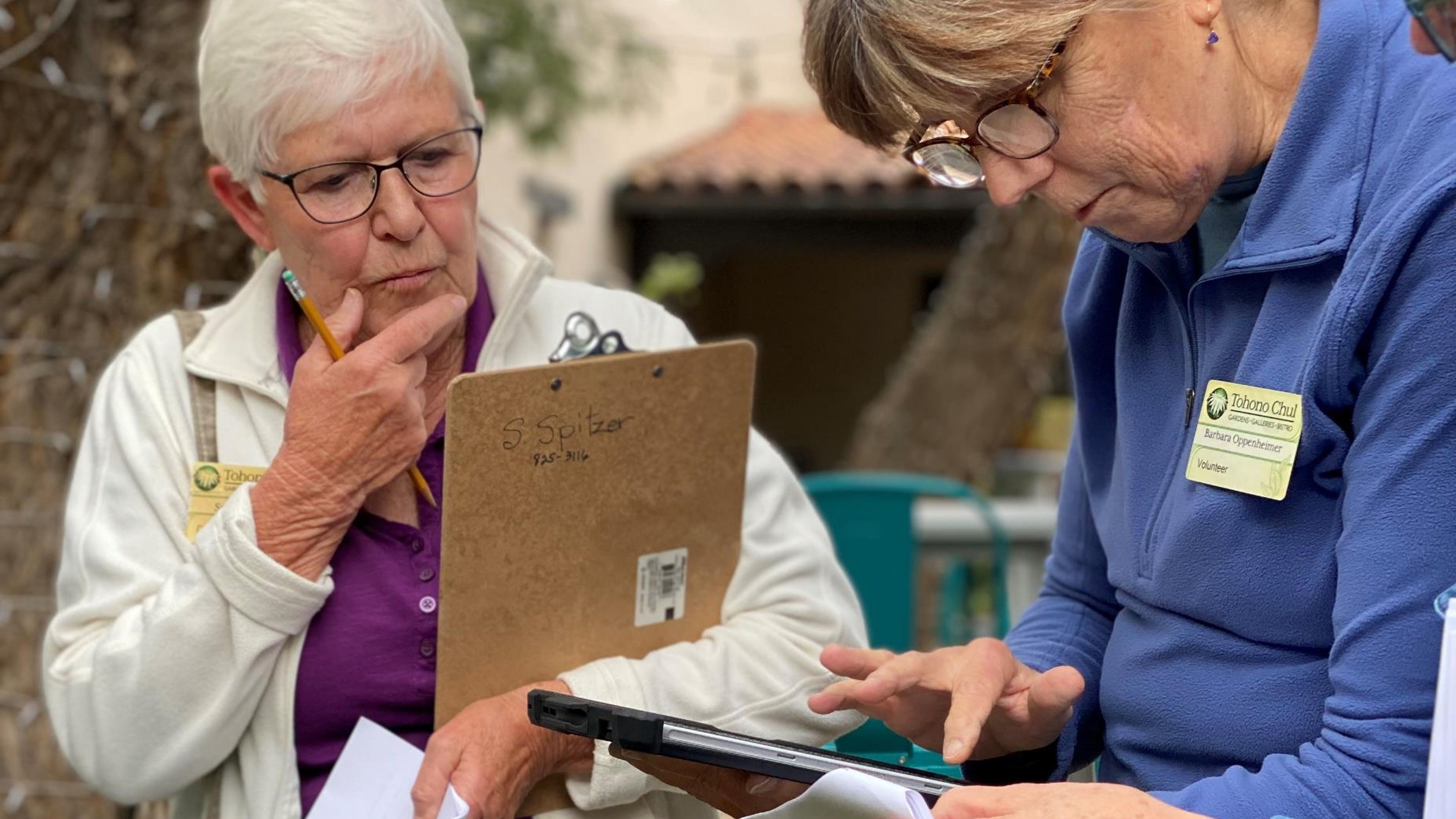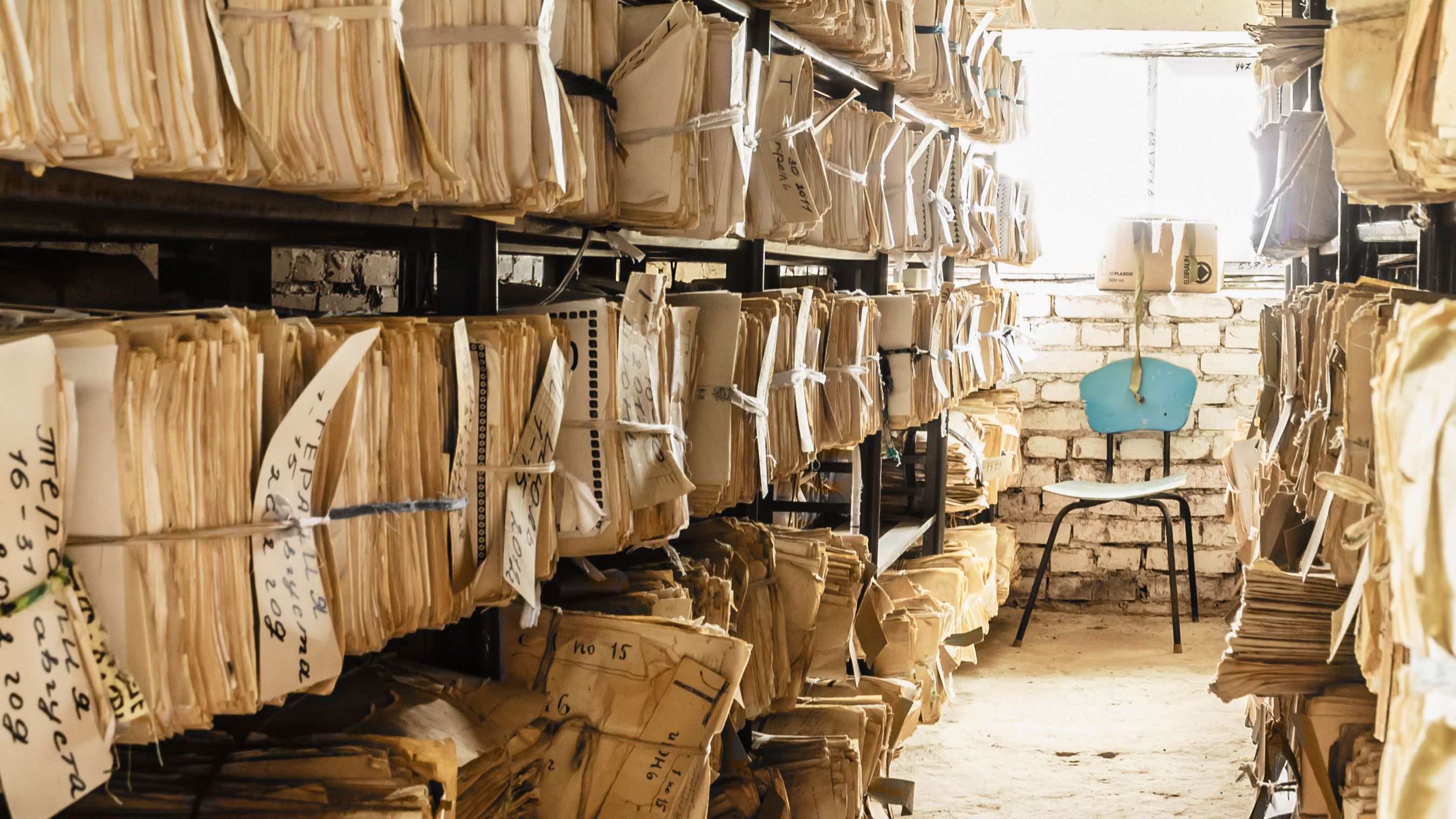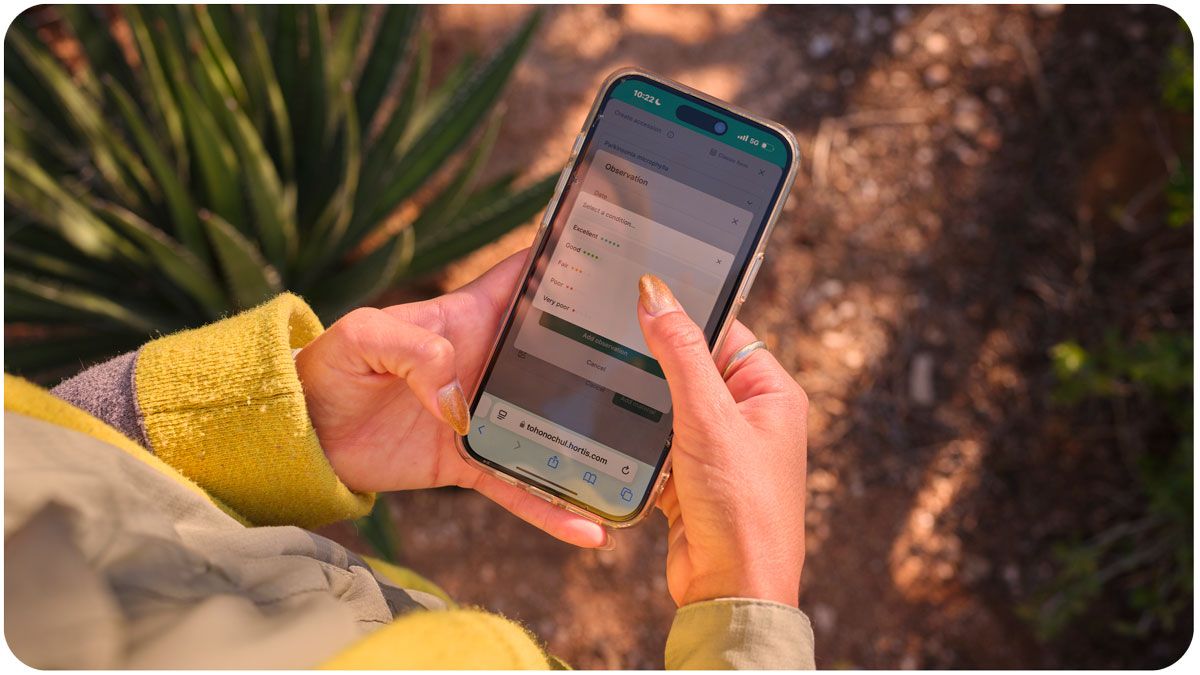Tips to revitalize your plant collection data


Plant collection data plays a crucial role in advancing the mission and impact of botanic gardens. However, many botanical and public gardens struggle to maintain accurate and comprehensive records. Inconsistent or incomplete data can hinder collection planning, public engagement, and participation in both local and global conservation efforts.
Is your institution facing challenges with unreliable data? Are you ready to take the next step toward transformation, or are you supporting someone on this journey? If so, this article is for you.
We’ll explore some common data challenges and share insights from Juliana Ahumada and her team at Tohono Chul Gardens as they worked to revitalize their plant records and enhance their garden’s impact.
As part of our webinar, "Re-Starting a Botanical Garden: How and Why," we followed Tohono Chul’s revitalization journey. In this article, we’ll highlight key topics covered in the session and add a bit more context to some of the aspects discussed in the session. You can watch the full webinar recording below.
Tip 1: Where to start?

A garden begins with a single seed, and the same principle applies to building a strong collection dataset.
At Tohono Chul, they approached this process in phases, starting with a three-month first phase. After reviewing their progress, they refined their approach before moving forward. Their key takeaway? Tackle the work in stages, setting achievable and measurable goals.
Begin with a collection or area that aligns most closely with your institution’s mission. For instance, Tohono Chul prioritized 10 key gardens out of their total 49. The right scale for your project will depend on your team’s capacity—whether that means starting small or expanding more quickly.
Above all, set realistic goals. The ultimate aim is for your team and institution to be able to utilize the collected data as you progress. This includes sharing your collection data with your visitors.
Tip 2: What should we do with the old data?

The old saying "a bad apple spoils the bunch" applies to data as well. When working with historical plant records, two key questions arise:
- Is the data reliable?
- Is the data essential for the future of your collection?
At Tohono Chul, Juliana Ahumada and her team chose to transfer their legacy data, fully aware of potential accuracy issues—especially concerning inventory gaps. In hindsight, Juliana believes a step-by-step approach, gradually adding and cleaning data, might have made the process smoother.
Addressing Data Reliability and Gaps
If data reliability is a concern, we bring years of expertise in data cleaning. However, missing data presents a different challenge—what hasn’t been recorded often cannot be recovered. One of the most common gaps in legacy records is provenance information, particularly details on when plants were acquired or removed from the collection. While some of this information can be inferred from existing records or institutional knowledge, gaps can limit the effectiveness of your collection management.
Choosing the Right Approach
When working with legacy data, you have three main options:
- Clean and import the data upfront. This approach allows you to start with a comprehensive dataset while refining records over time through research and routine inventory updates.
- Manually review and gradually add old data. This ensures greater accuracy but may not be practical for large datasets. However, it can be a good compromise if accuracy is a priority.
- Start using Hortis now and add legacy data later. This allows you to gain experience with the platform before deciding whether to manually enter data or perform a bulk upload. It’s a flexible approach that helps you determine the best strategy for your collection.
The right choice depends on your collection’s needs and available resources. No matter which path you take, prioritizing data integrity will enhance your ability to manage and conserve your collection effectively. We’re here to guide you through this process and help you explore the best approach for your institution.
Tip 3: Record what you know

The foundation of any collection dataset is knowing what you have and where it is located. While this information is always accessible, other details—such as provenance (where it came from) and key dates (when it was added to the collection)—can be harder to determine.
The best approach is to record what you know while also documenting uncertainties to allow for future updates. Long-time staff members or volunteers may hold valuable historical knowledge, so engaging with them can help fill in gaps. Old archives or invoices may also provide helpful information.
Recording Uncertainty
To track uncertainty, use identification qualifiers to indicate accessions that need verification. You can also add tags, such as [Needs Review], to flag data requiring further research.
Key Collection Data
At a minimum, you will always be able to record or find out:
- Plant identification (species, cultivar, etc.)
- Location (where the plant is currently growing)
- Last observed date (when it was last confirmed in the collection)
Additional Important Data
Some details may require further research but can greatly enhance your dataset:
- When was the plant material added to the collection?
- When was it removed (if absent)?
- What is its provenance? (wild-collected, sourced from another garden, purchased, etc.)
- Who supplied or donated it?
- What is its lineage? (e.g., part of a breeding program, vegetative propagation history)
- For wild-collected plants: Where was it collected? When? By whom?
By starting with reliable core data and systematically filling in gaps over time, you can build a more complete and useful collection record.
Tip 4: How do we assign accession numbers?

A traditional accession number consists of two components: the accession year followed by a sequence number. For example, 2012-0014 represents the 14th accession recorded in 2012. The accession year typically reflects when the plant material was officially recorded into the collection.
By following this approach, you should use the current year for new accession numbers, even for plants that have been in the collection for decades. However, since accession numbers are often used to estimate a plant’s approximate age, a pragmatic approach may be preferable.
Choosing an Accession Year for Existing Plants
- No existing plant records? Use the current or previous year for all plants in the collection to establish a clear reference point for when accessioning began.
- Have data on plant arrivals? Consider using the arrival year as the accession year to better reflect historical records.
- Established woody specimens with no records? You may choose the year the garden was founded or another well-documented date to provide historical continuity.
Ultimately, the best approach depends on your institution's needs and how accession numbers will be used for record-keeping and collection management.
Tip 5: Choosing the right tools

Having the right tools can make plant record-keeping more efficient and accessible. Hortis is designed to work seamlessly on any device with an internet connection, whether it's a smartphone, tablet, or PC. This flexibility allows your team to update records in real time—whether in the garden, office, or field.
Which Device is Best?
Your choice of device depends on your team’s workflow and preferences:
- Smartphones: Convenient for quick updates and capturing photos while working in the garden.
- Tablets: Offer a larger screen for easier data entry while still being portable.
- PCs & Laptops: Ideal for bulk data review, analysis, and administrative tasks.
Some gardens allow staff to use their personal smartphones, while others invest in dedicated devices for consistency. There’s no one-size-fits-all solution, so we recommend experimenting with different options to find what works best for your team.
No matter what device you choose, the key is ensuring that collection data remains accessible, up-to-date, and easy to manage—helping your garden make the most of its records.
Devices for harsh conditions
Outdoor conditions can be tough, with high temperatures, humidity, and exposure to dirt. To ensure reliable performance in these environments, you might want to consider using a rugged device—designed to withstand extreme conditions.
For fieldwork in challenging conditions, we recommend choosing devices with IP68 and MIL-STD-810H durability ratings. These certifications ensure:
- Water Resistance: Can be submerged in water for up to 30 minutes.
- Dust & Dirt Protection: Sealed against fine particles.
- Temperature Tolerance: Operates in temperatures up to 50°C (120°F).
- Shock & Drop Resistance: Built to withstand impacts and rough handling.
Investing in a durable device ensures that your team can record data in real-time—rain or shine—without risking equipment failure.
To find the right device for your needs, we recommend checking trusted tech review websites for in-depth comparisons and real-world performance insights of rugged devices. Try a search for "rugged tablet and smartphone review".
Tip 6: Make Your Collection Data Work for You

Recording plant collection data is just the beginning—how you use it is what truly makes a difference. Well-managed data should support your garden’s mission, enhance day-to-day operations, and engage visitors.
Practical Ways to Utilize Your Data
- Collection Planning & Curation: Use data insights to guide plant acquisitions, replacements, and conservation priorities.
- Interpretation & Public Engagement: Share plant stories through signage, guided tours, or interactive digital tools. Visitors appreciate learning about provenance, conservation status, or a plant’s role in local ecosystems.
- Research & Conservation Efforts: Accurate records contribute to broader scientific and conservation initiatives, from seed banking to habitat restoration.
- Collaboration & Data Sharing: Consider sharing records with networks like BGCI’s PlantSearch, local conservation groups, or academic researchers to maximize their impact.
Keeping Your Data Active
To prevent your records from becoming stagnant:
- Conduct regular data reviews and updates during routine inventories. The last observation date can help you to prioritize.
- Assign ownership of data tasks to specific staff or volunteers.
- Engage and keep track of how visitors and educators interact with the collection data. Learn and improve.
- Routinely include collection metrics in your internal communications to increase institutional awareness about the collection.
By ensuring that your plant records are actively used, you strengthen not only your collection but also your garden’s long-term impact on conservation, education, and research.
More about Tohoho Chul's success
Read the success story of Tohono Chul: Transforming Record-keeping.
Watch the webinar
Watch the recording of "Re-Starting a Botanical Garden: How and Why"